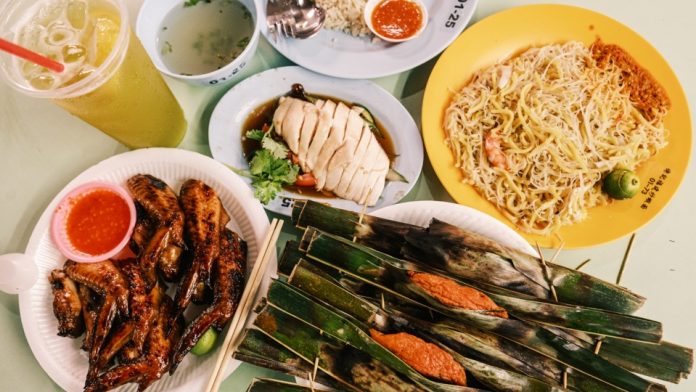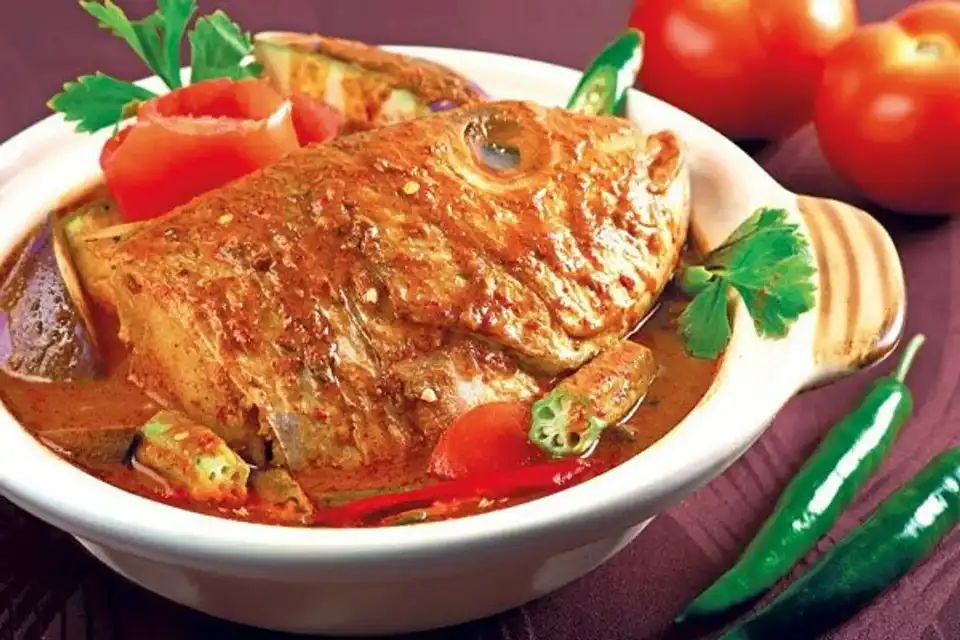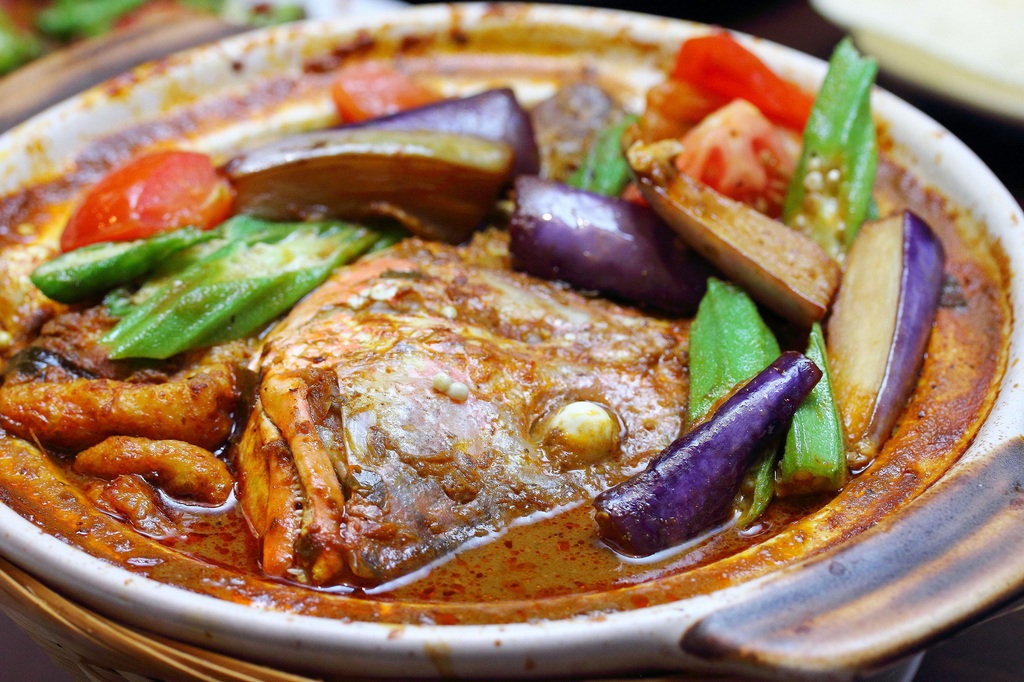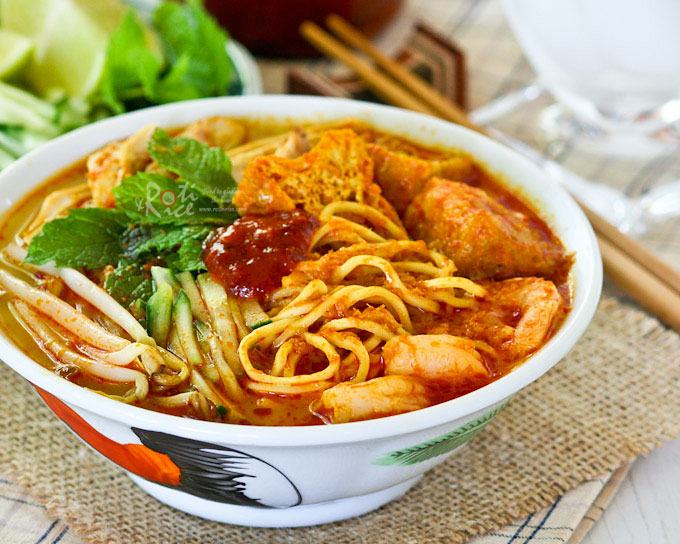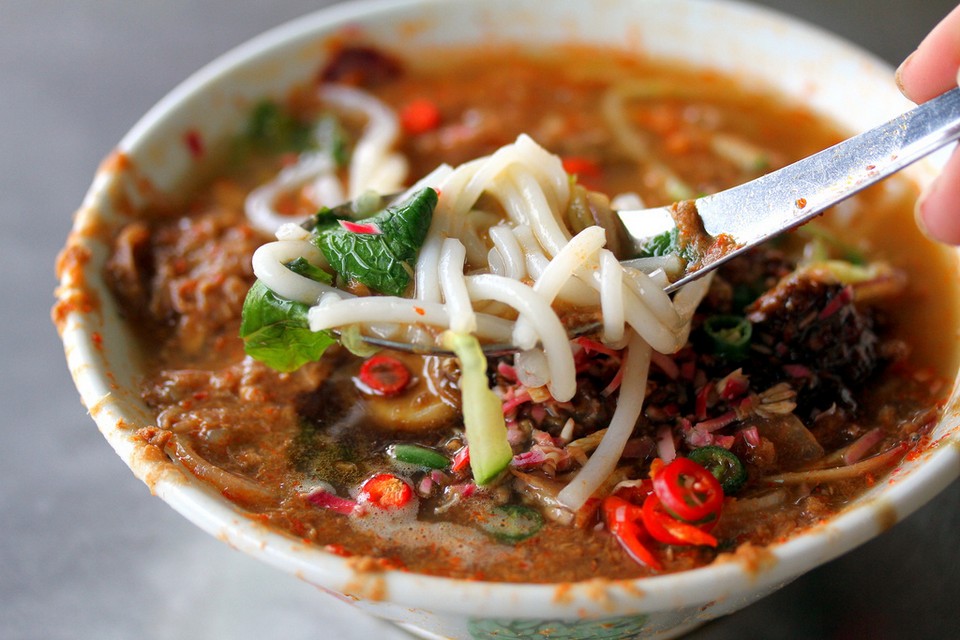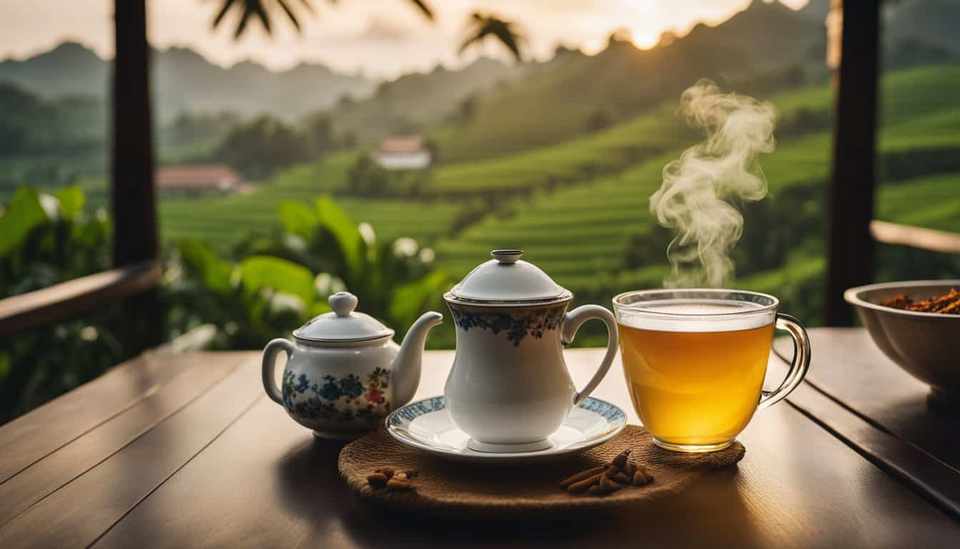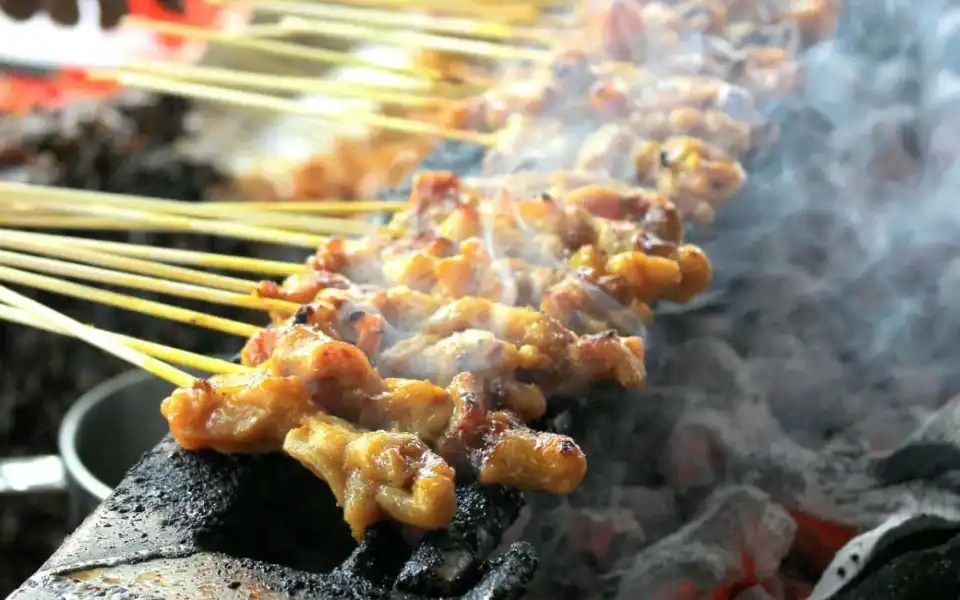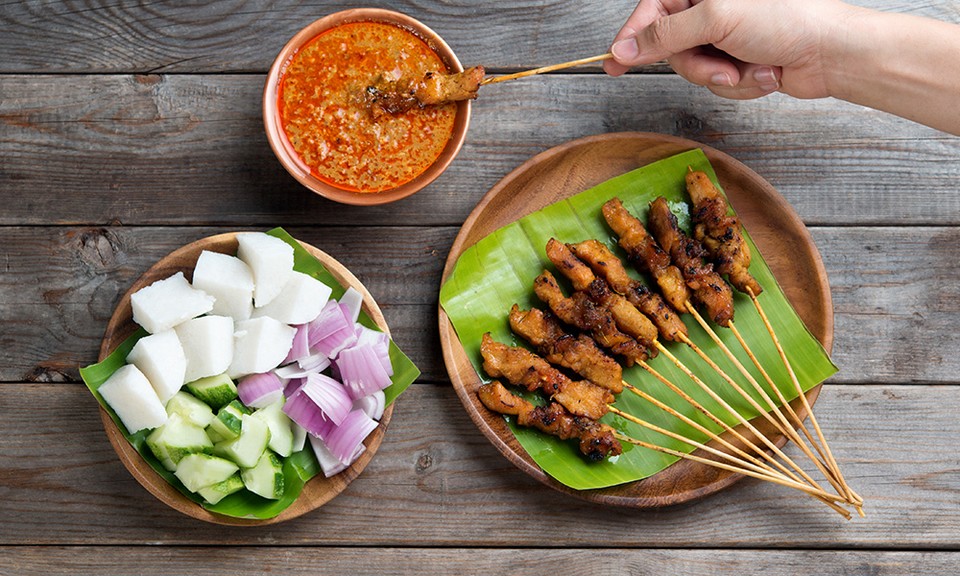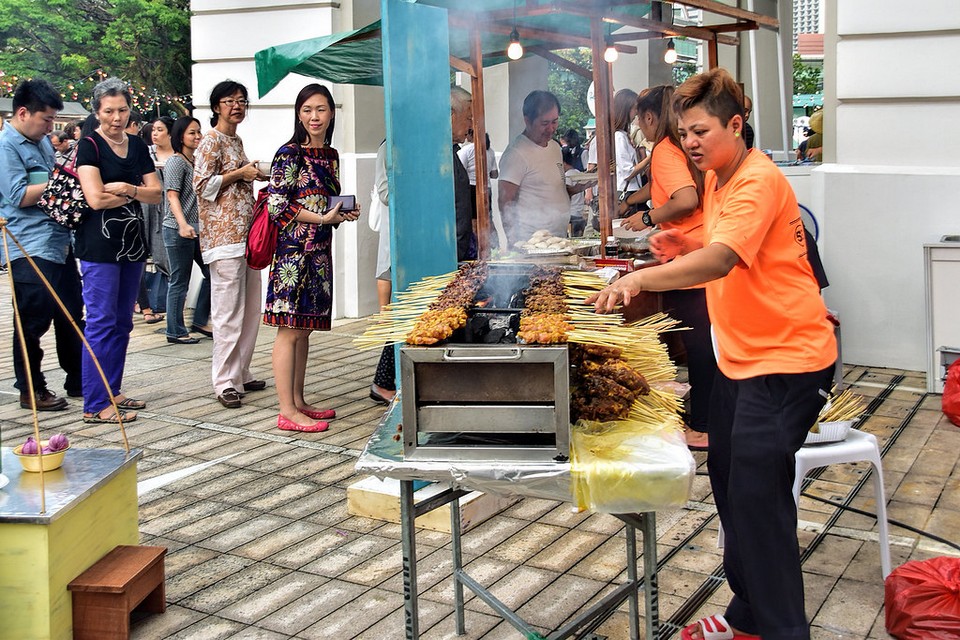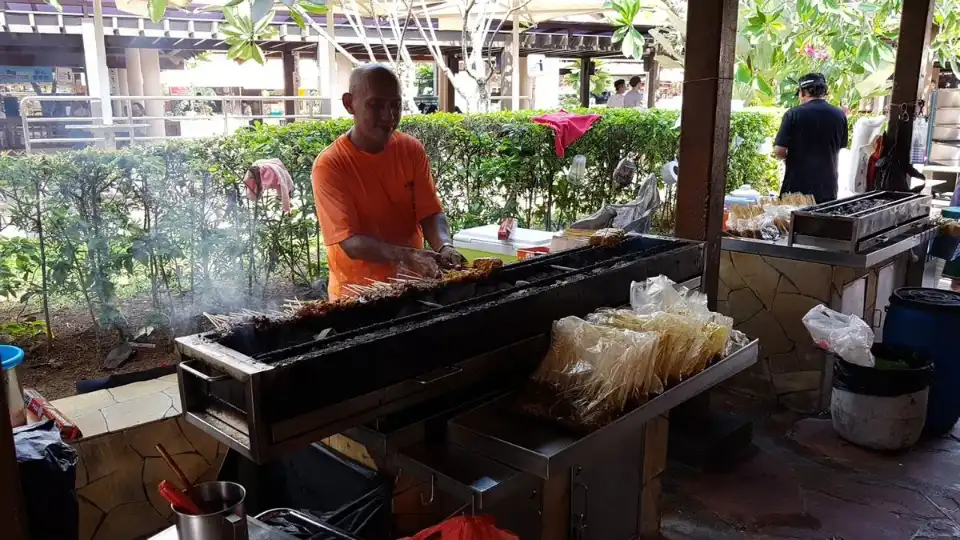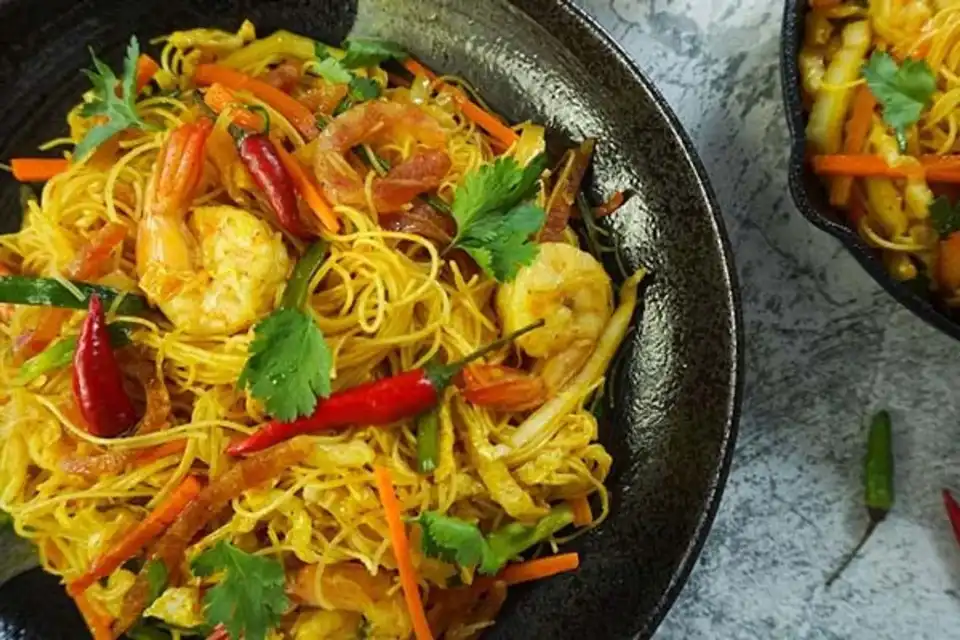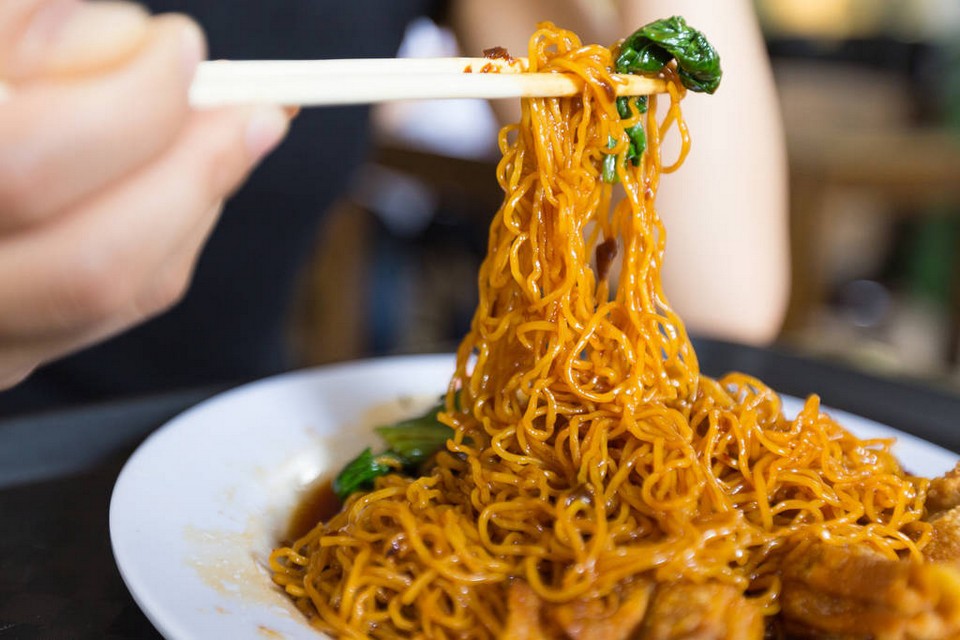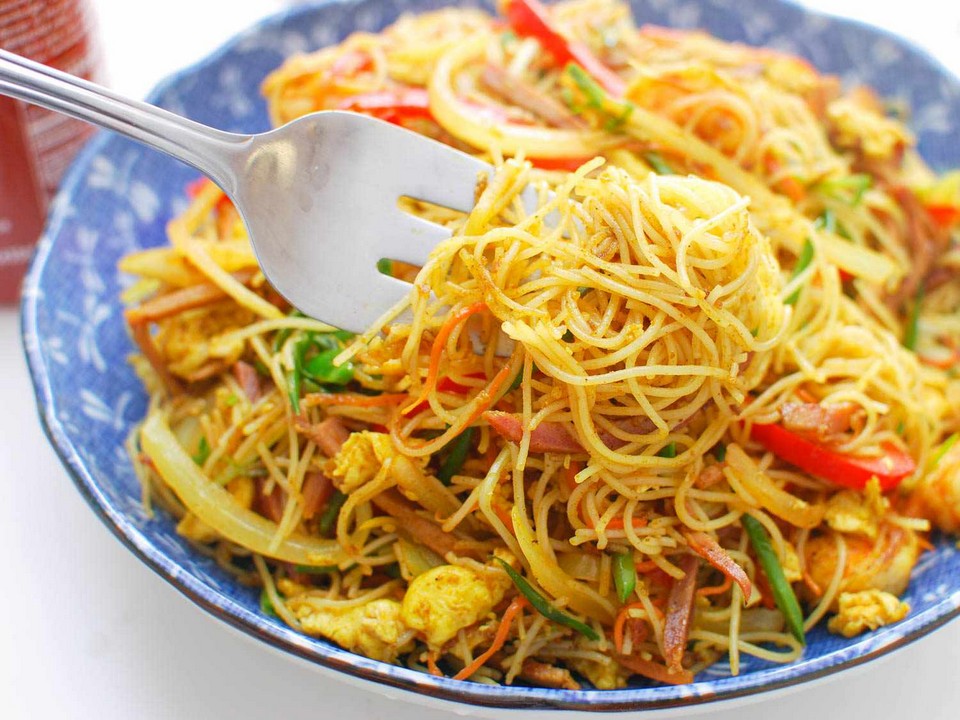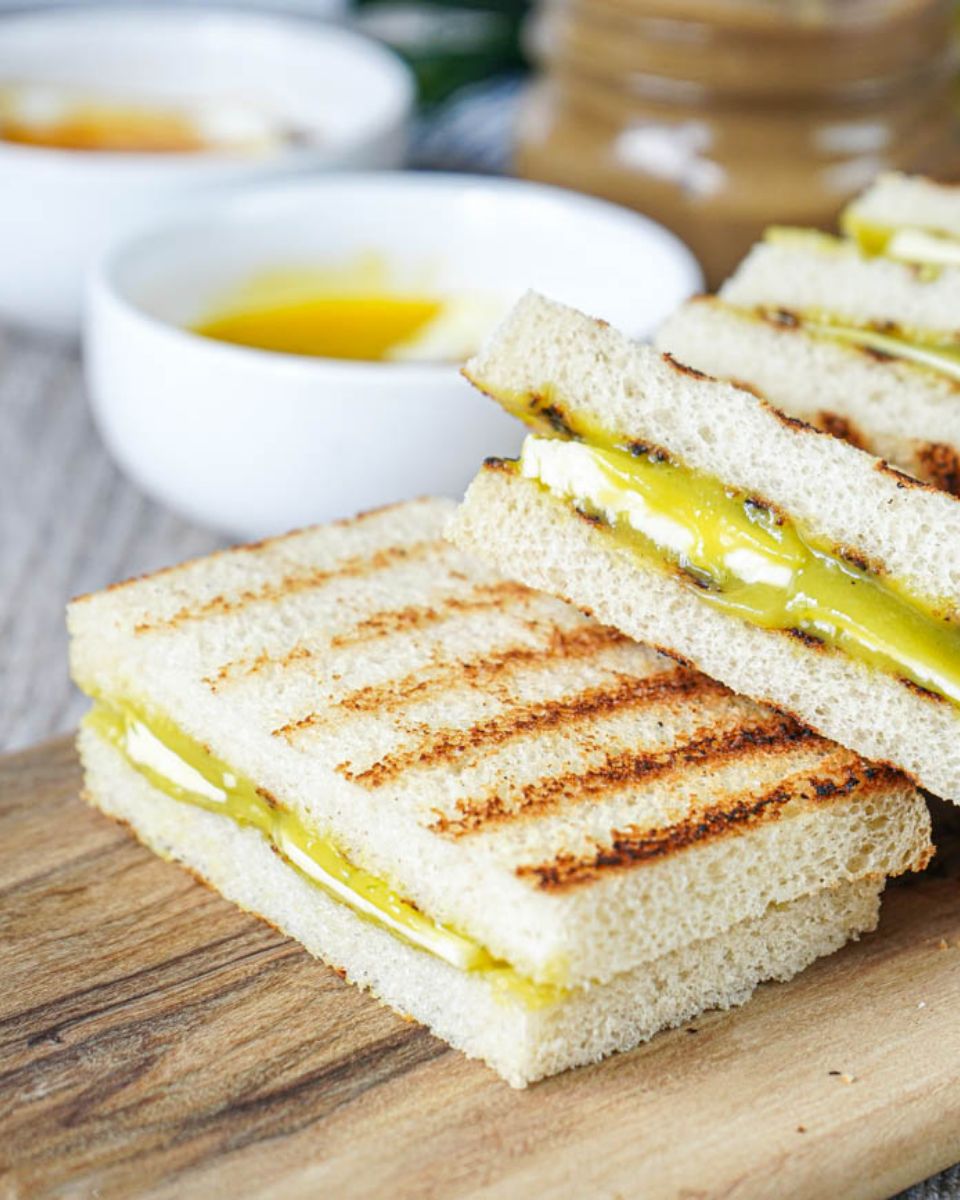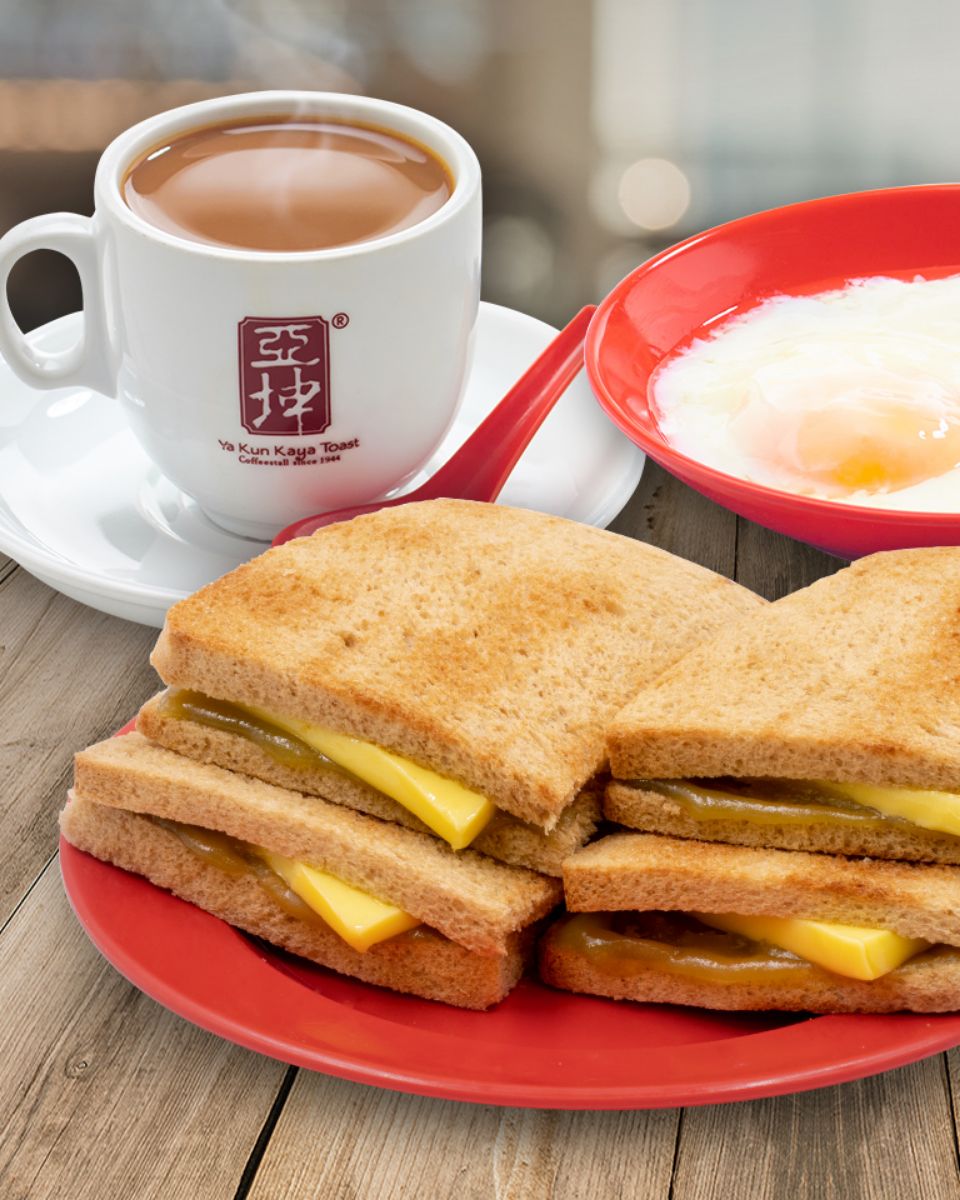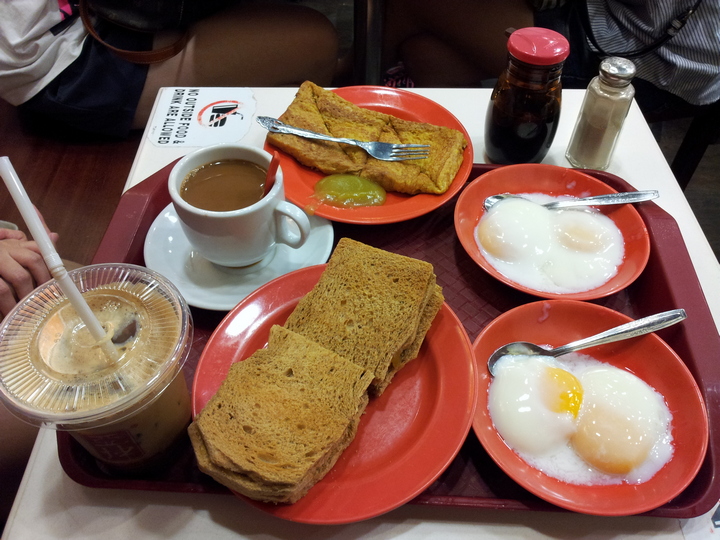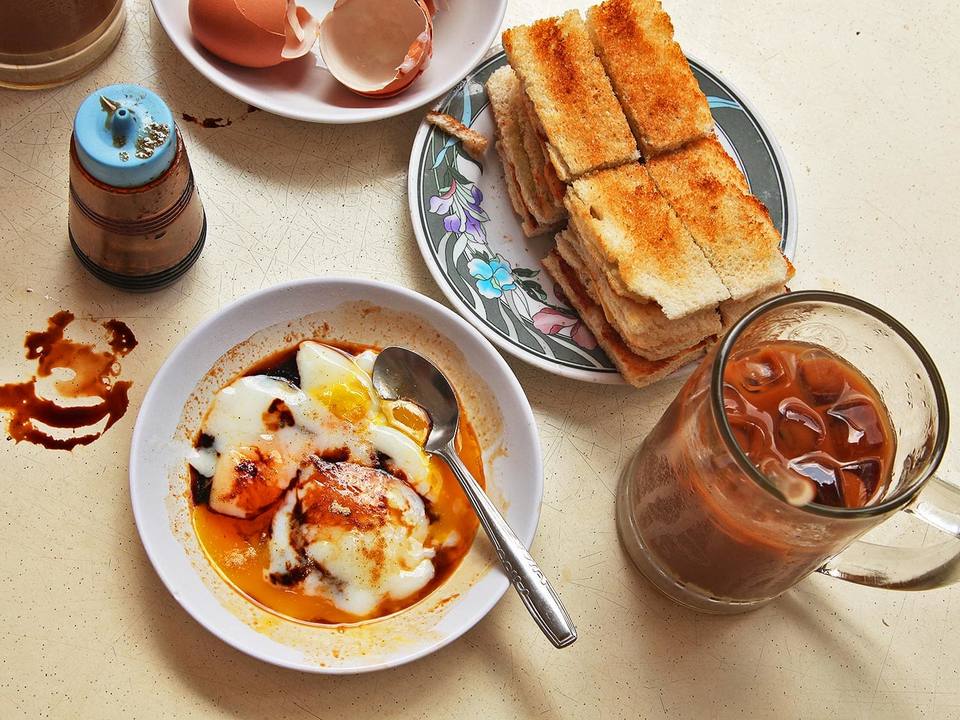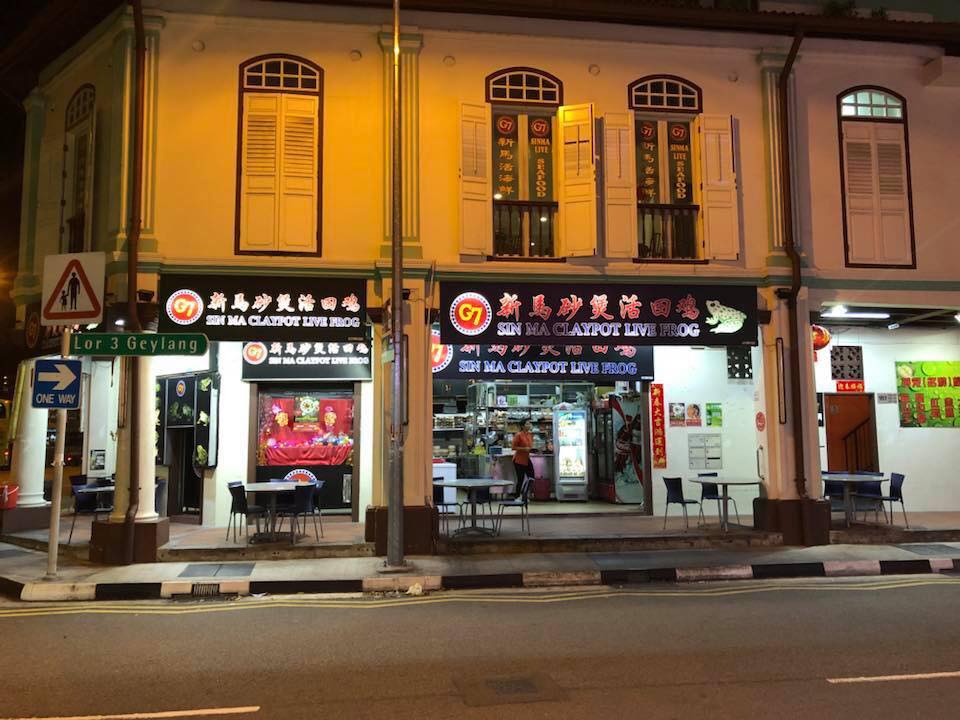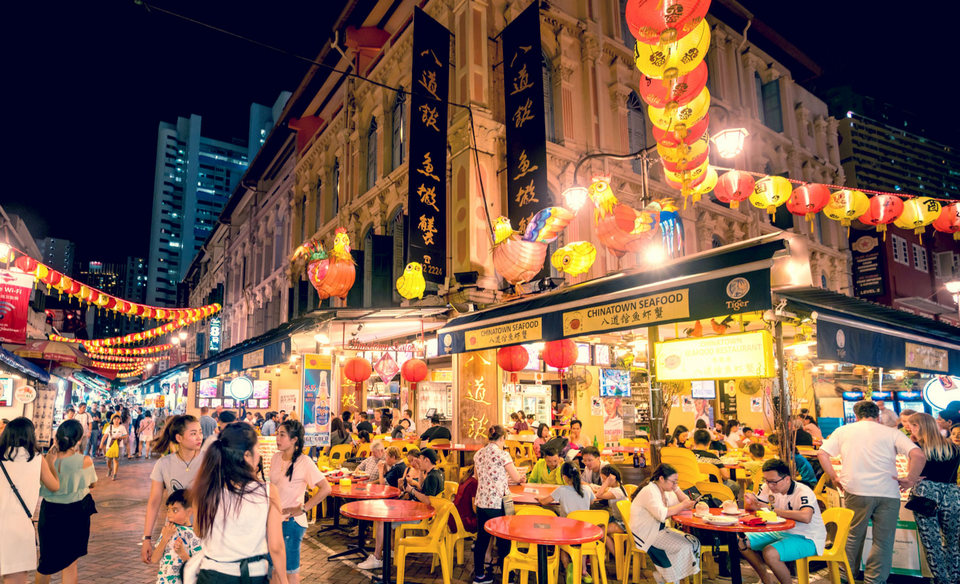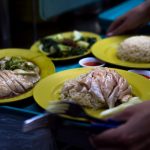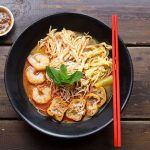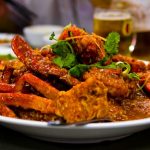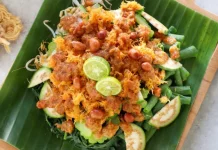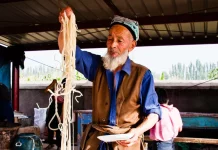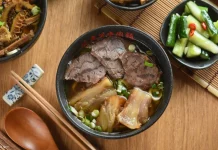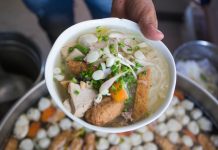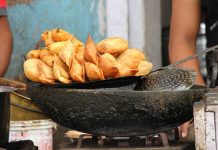Singapore is an ideal destination for cuisine discovery. There’s traditional fare, there’s modern cuisine, there are global tastes and there are unexpected flavor twists and turns. If you are a foodie, going on a food tour is a great way to discover the unique Singaporean cuisine with influences from different ethnic groups and learn about our history and culture.
- Singapore best eats — 9+ best food to try in Singapore & food must eat in Singapore
- Top food in Singapore — 10 food must try in Singapore & most popular food in Singapore you must try
- Must eat food in Singapore — Top 14 must try & most Singapore famous food to eat in Singapore
- Hong Kong Soya sauce Chicken Rice and Noodles — The first Singapore street food vendor ever awarded a honorable Michelin star
- Michelin Star restaurant Singapore street food — 5 cheap Singapore 1 star Michelin street food stalls you definitely must-try

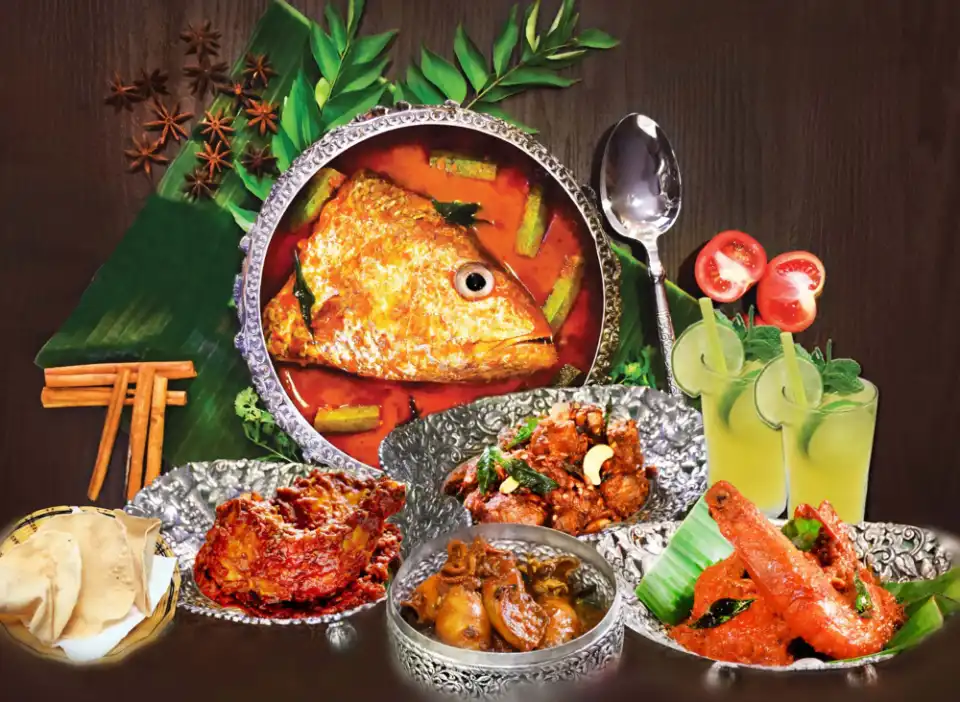
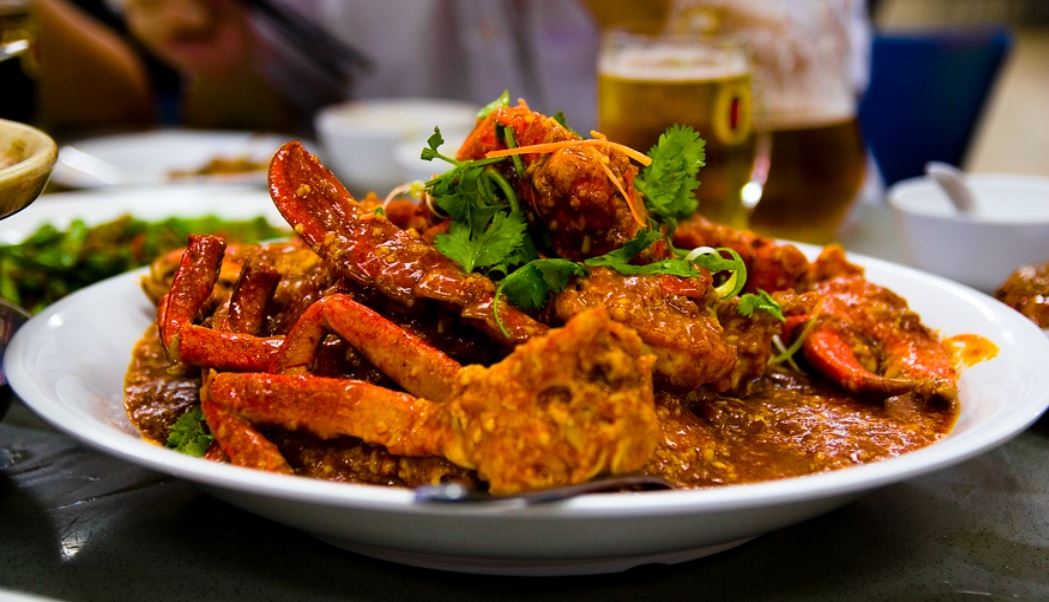
So, what to eat in Singapore and what should I eat in Singapore? Let’s check out our suggested 10+ best food in Singapore, Singapore best eats and top food in Singapore including best street food in Singapore, must try street food in Singapore, most popular food in Singapore, food must eat in Singapore, famous dishes of Singapore, best food to try in Singapore as follows!
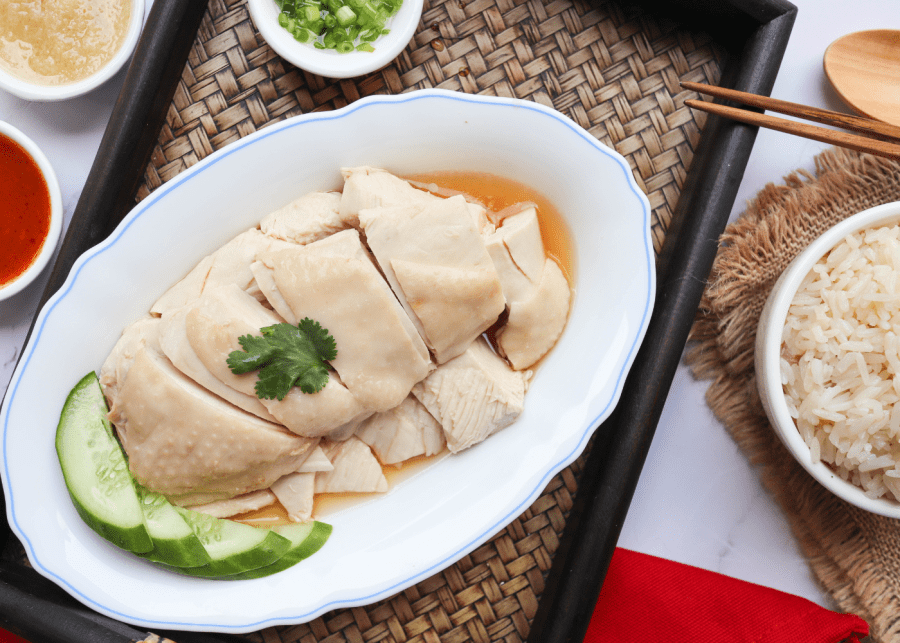
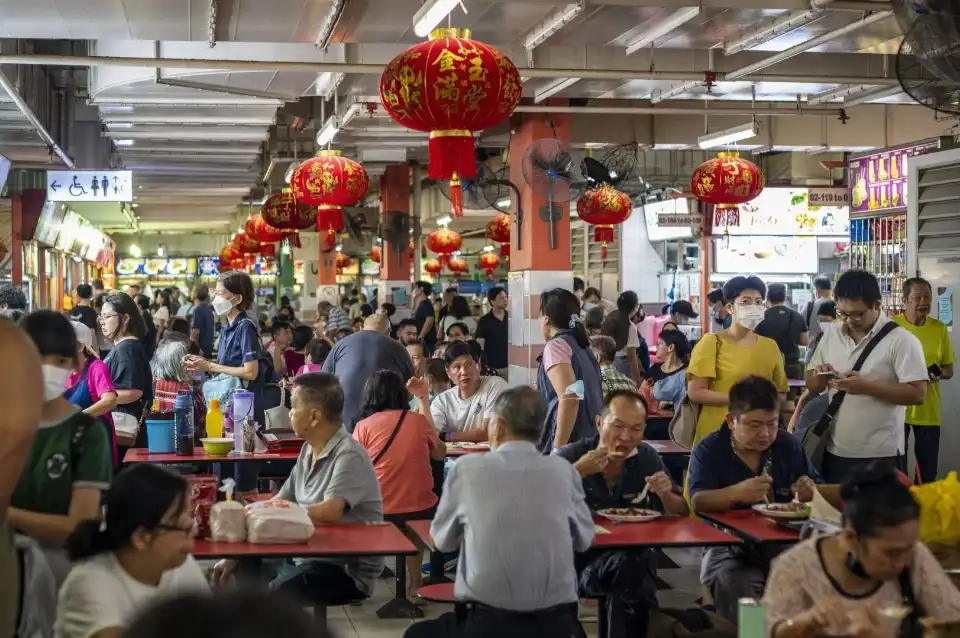

What to know to eat the most authentic dishes, join us and go on a culinary adventure to experience the delicious flavors central to modern Singapore food culture!
Chili Crab (#best street food in singapore)
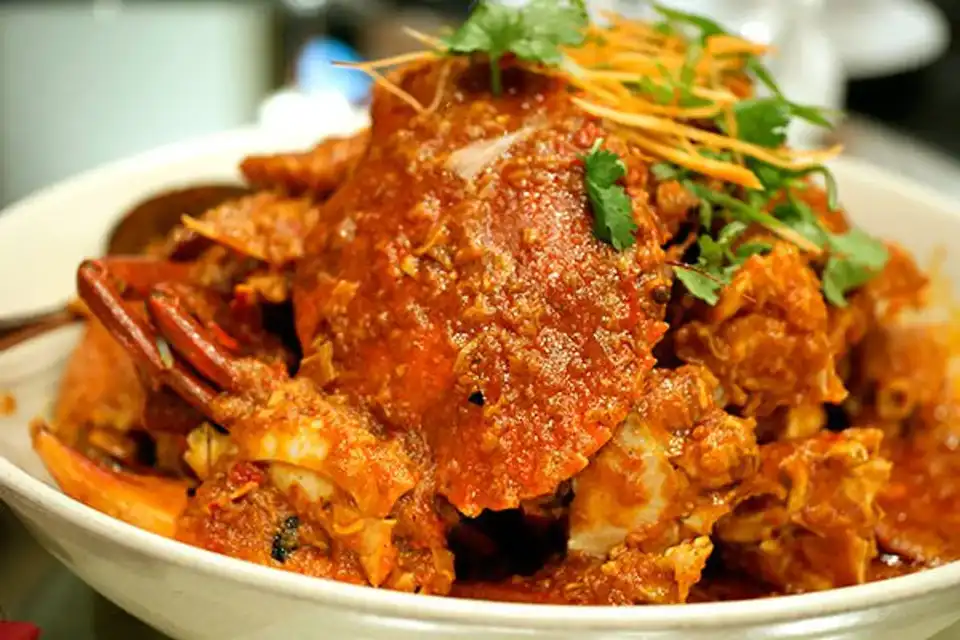
It is a prominent Singaporean food. International tourists are impressed with this dish’s color, flavor, and recipe. If chili crab is delicious, you must use the signature ingredients, which are classic chili Sri Lankan crab. It’s an explosion of seafood flavor, less spicy than the name suggests subtly sweet, deeply savory—sauce excellence at its finest. The whole crab is still intact on the plate, the eater must separate in hands each part of the crab (shell, legs, and more) to slowly enjoy them.

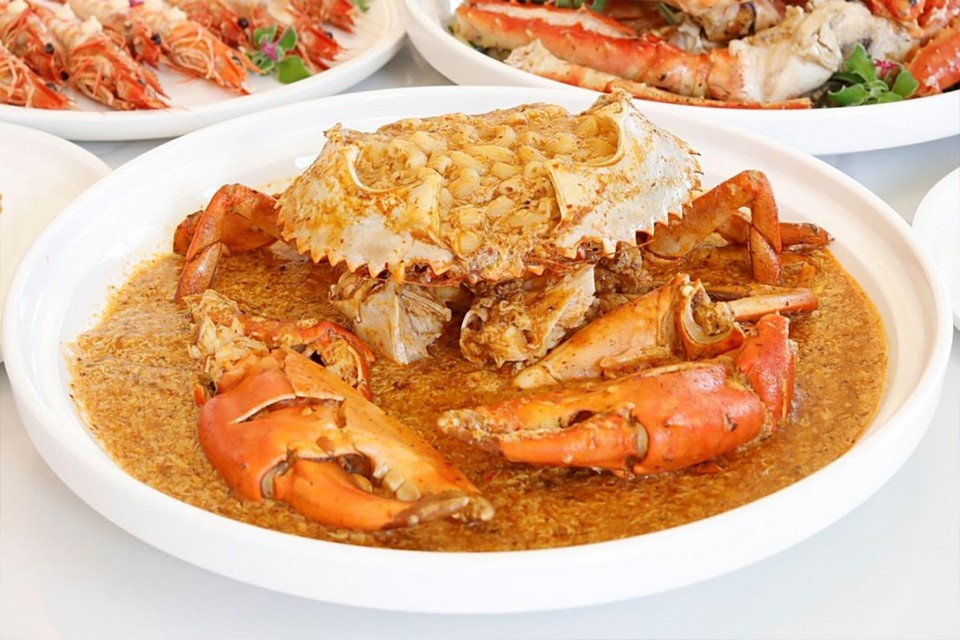
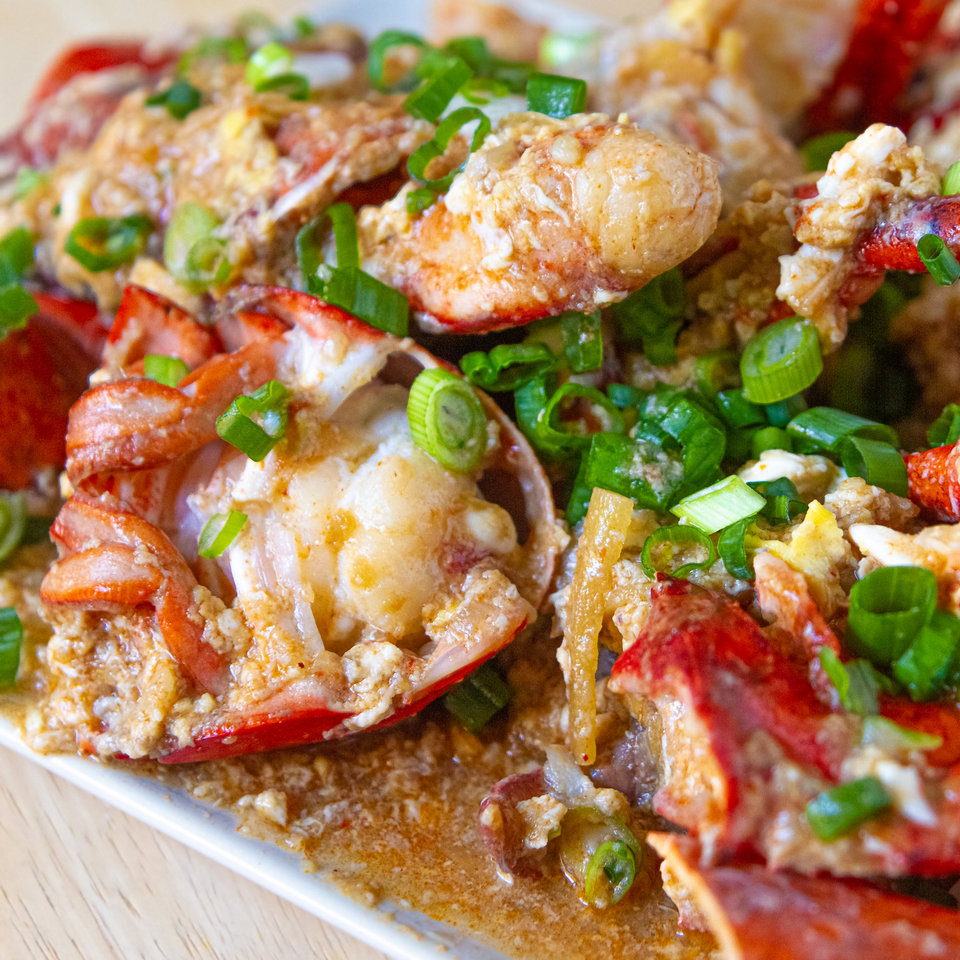
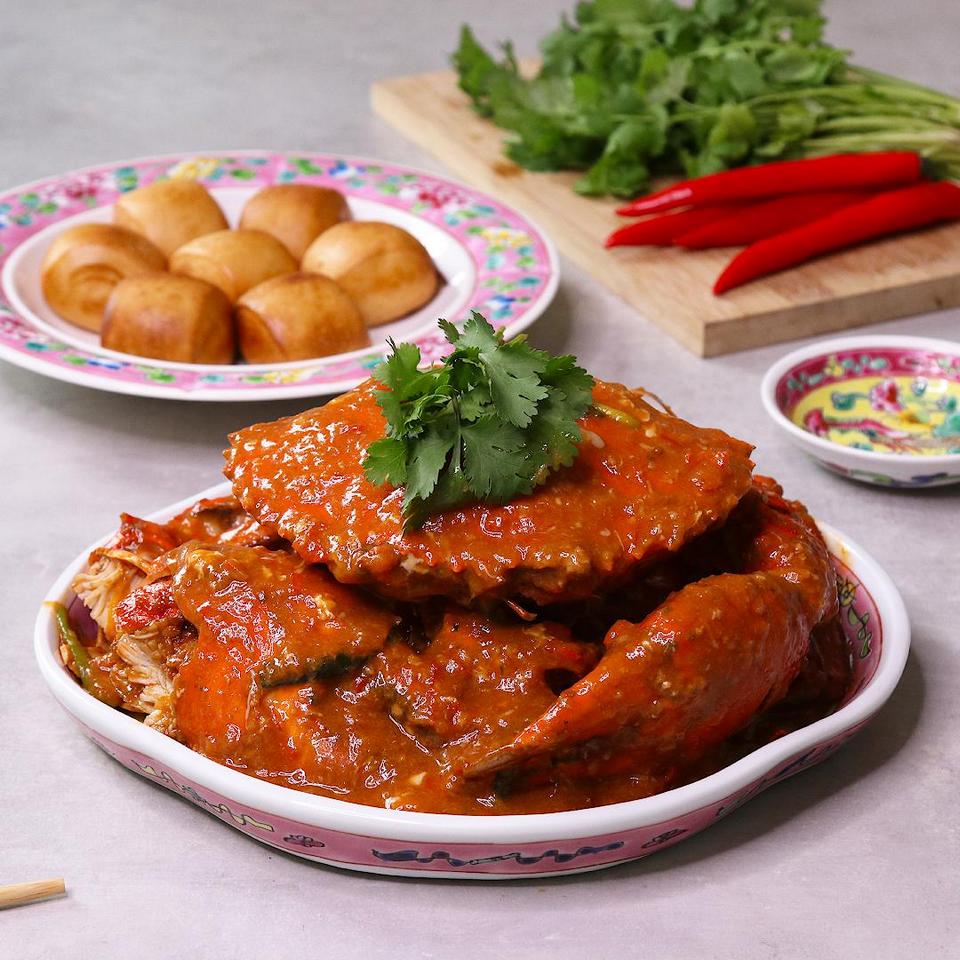
Chili crab sauce is unique. It looks smooth, slightly thick, and has an iconic red color. The spicy and sour sauce submerged in fried or steamed dumplings or man tou is eaten with fatty crab meat.
Fish Head Curry (#best street food in singapore)
Fish Head Curry offers a unique taste experience that captures the essence of Singaporean cuisine. The dish’s distinctive flavor comes from using fish heads as the main ingredient, resulting in a rich savory umami taste unparalleled in other seafood dishes.
A commonly used ingredient in Chinese cuisine was incorporated into a classic Indian curry, so fish head curry has something like Indian cuisine.
Born in 1960 in an Indian restaurant, however, the real purpose of preparing this dish was to serve the Chinese, not the Indians. Fish Head Curry has accredited them with multiple impressive accolades. This dish in particular merges South Indian curry aspects with the Chinese favored dish of steamed fish head. Consequently, the cuisine experts have assumed the food is for Chinese and Indian people.

You will be startled by its somewhat strange appearance with bulging eyes and a large fish head. Nevertheless, you will be addicted to this delicious food for life.
There is no specific curry fish head recipe. Every ethnic group here has its version of the dish, with slight variations to the curry. Some mix in tamarind paste for a tinge of sourness, while others add coconut milk for a creamier texture. They think coconut milk has a rich, delicious taste and is more pleasant to eat than tamarind sauce.

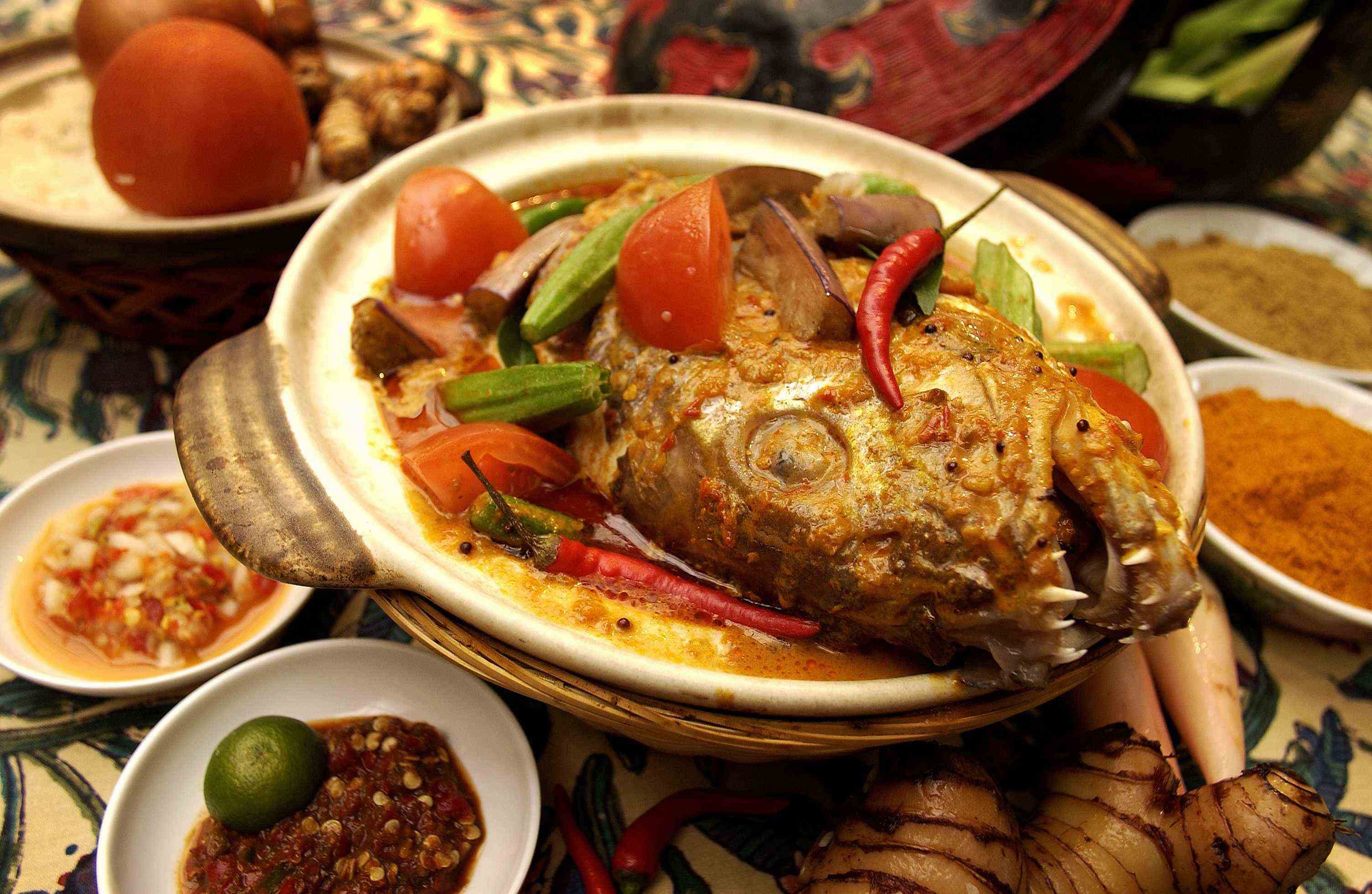
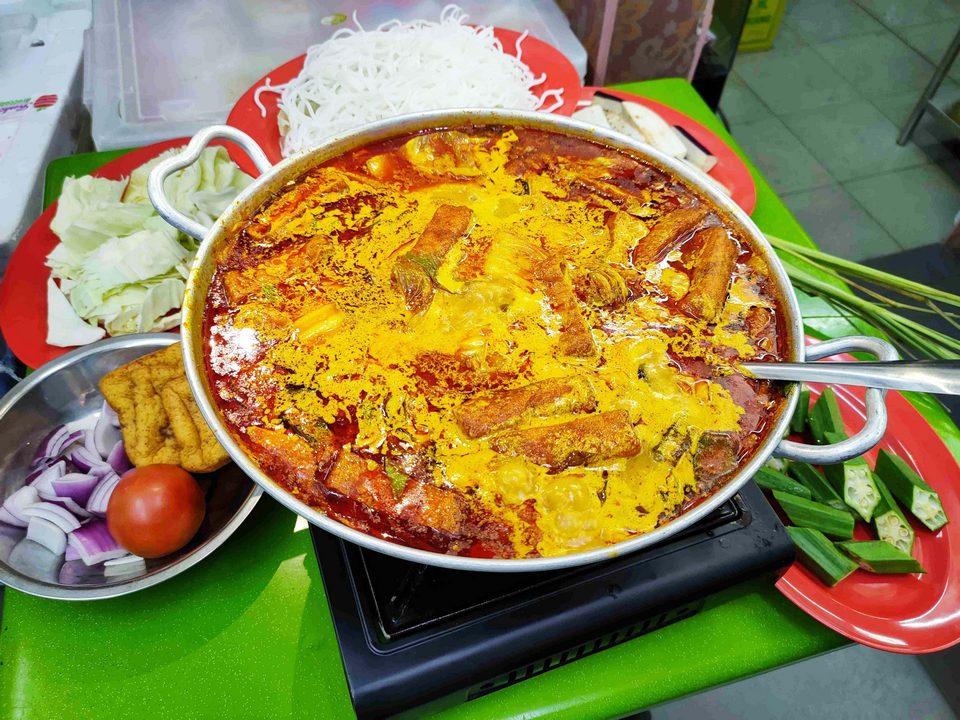
The immutable rule for a fish head curry recipe is to choose the main ingredient—snapper fish head. But anyway, you will be passionate about this food including a fresh fish head deeply cooked in a tasty sauce, eggplants, and okras.
Hainanese Chicken Rice (#must try street food in singapore)
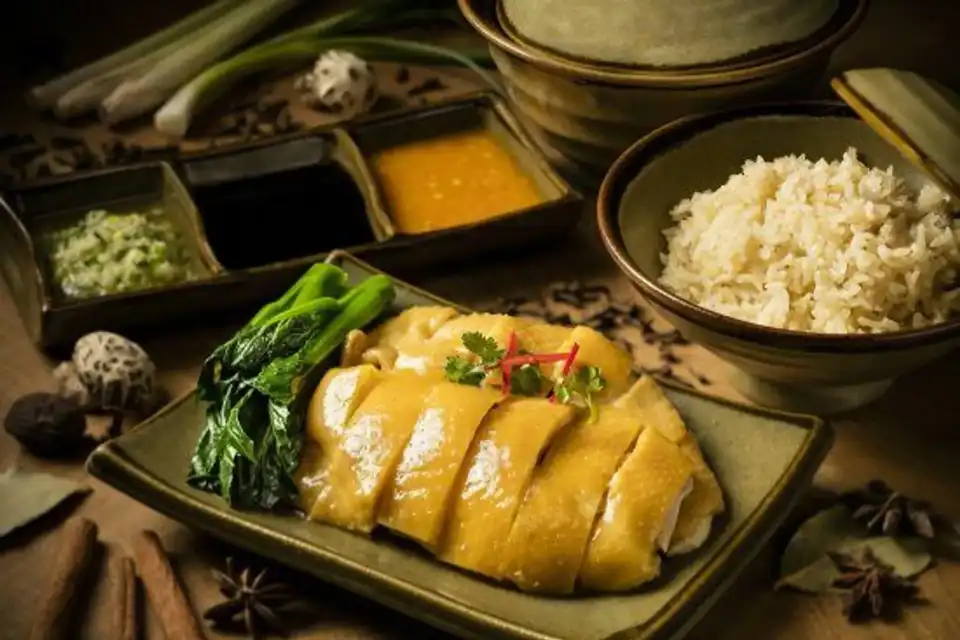
Hainanese chicken rice originated on an island on the South coast of China – Wencheng District of Hainan. Singapore and Malaya tasted chicken rice in the nineteenth century from immigrants and infused it with local influences.
The Hainanese chicken rice is a dish that consists of succulent poached white chicken cut into bite-size pieces and served on fragrant rice with some light soy sauce. The rich flavor of the rice comes from the grains that have been pre-fried in chicken fat and then cooked in chicken broth. The chicken is poached until just cooked, with a little pink remaining on the flesh near the bones.

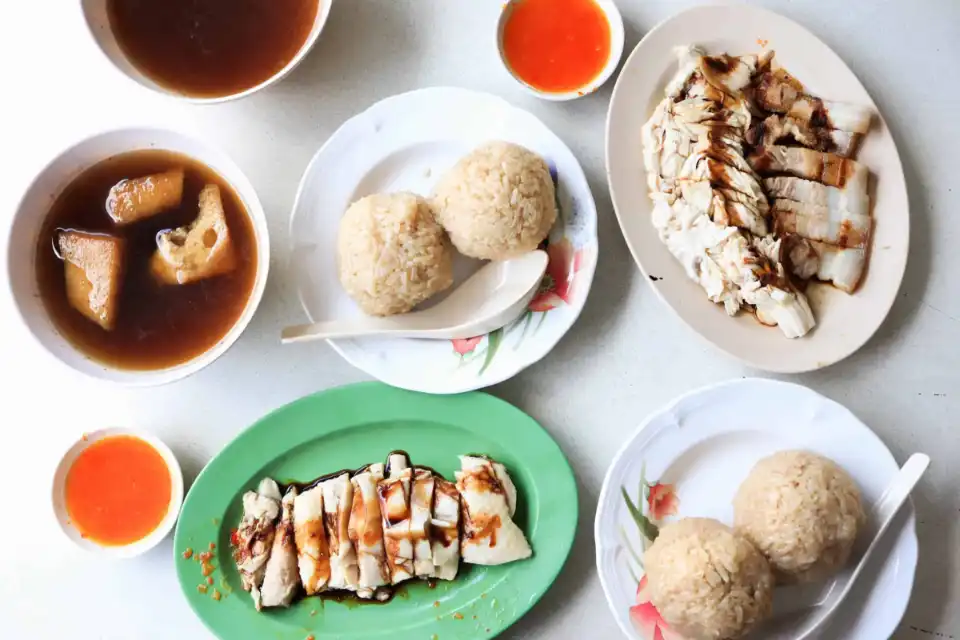

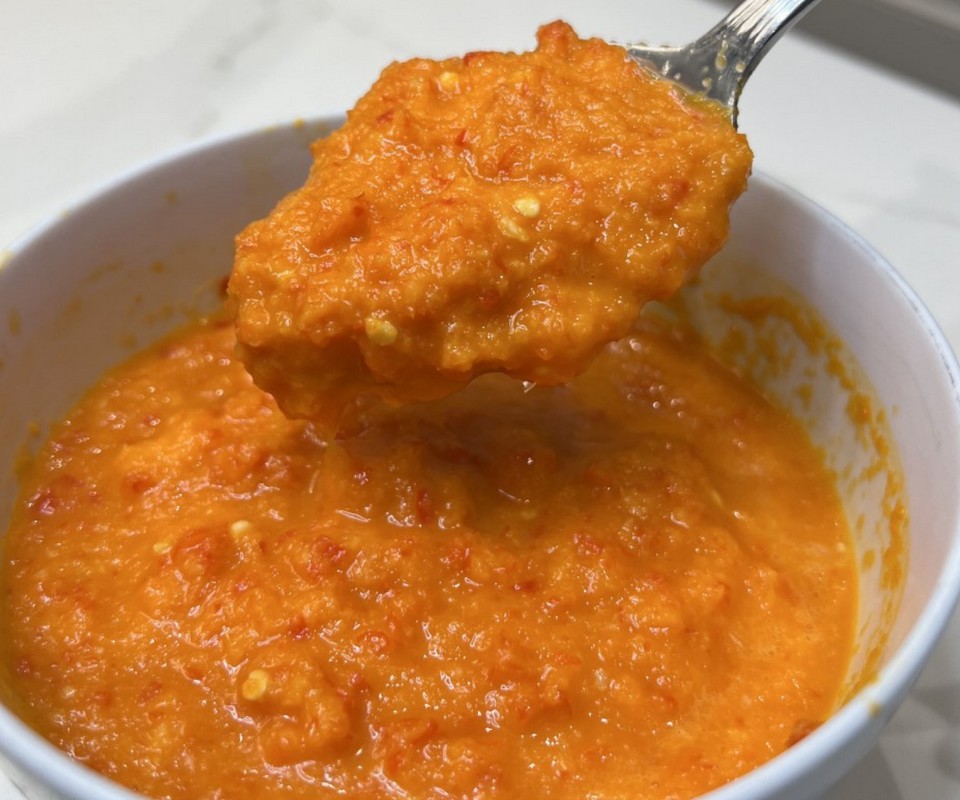
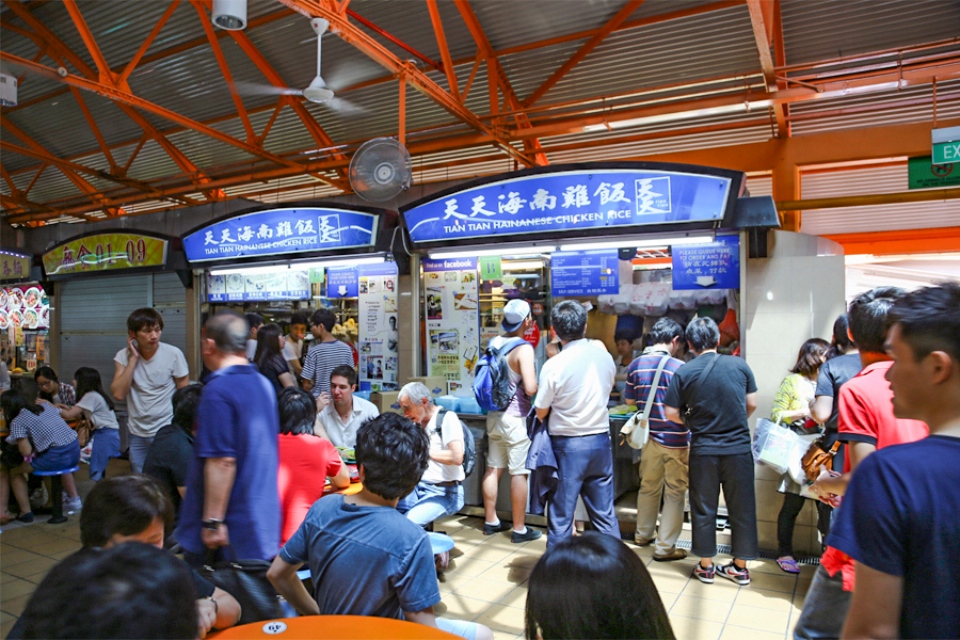
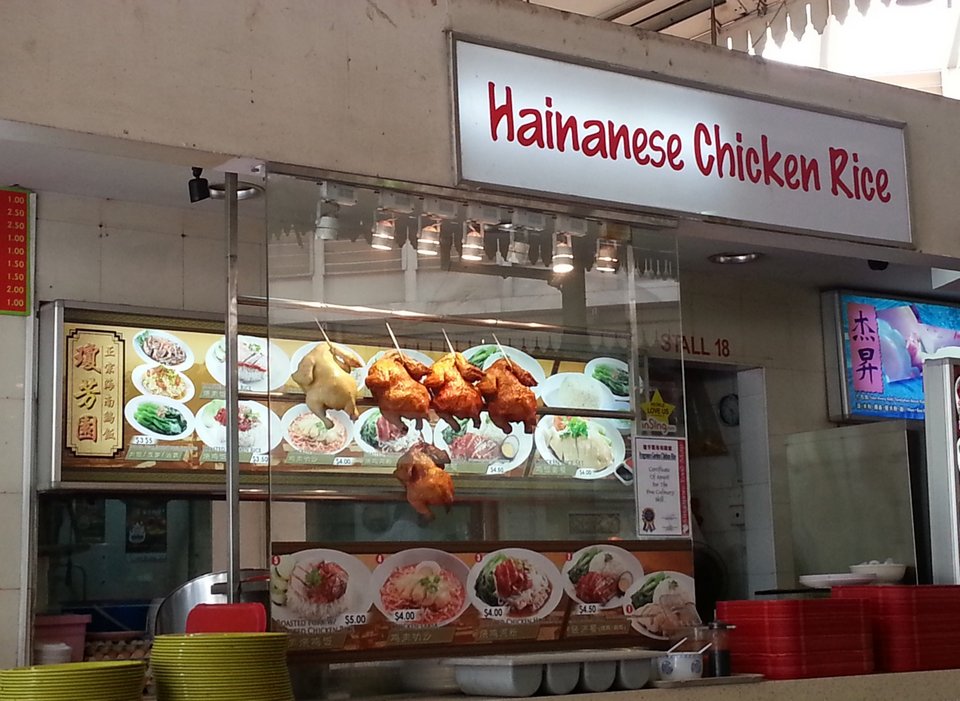
Hainanese chicken rice is indispensable to a sauce made from chilies, chicken broth, garlic, and ginger. It is considered the soul of this food. A thick broth of chicken stock, garnished with a sprinkle of spring onions and coriander leaves, is also a must!
Laksa

Laksa is a spicy, fragrant noodle soup in Southeast Asia, particularly Singapore, Malaysia, and Indonesia. It consists of noodles (either wheat noodles, rice vermicelli, or egg noodles/Hokkien noodles) in a thick broth made with spices, fresh aromatics, shrimp paste, and coconut milk.
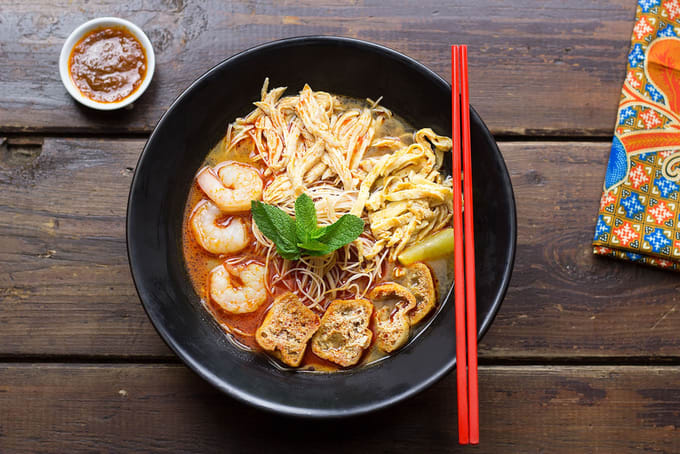
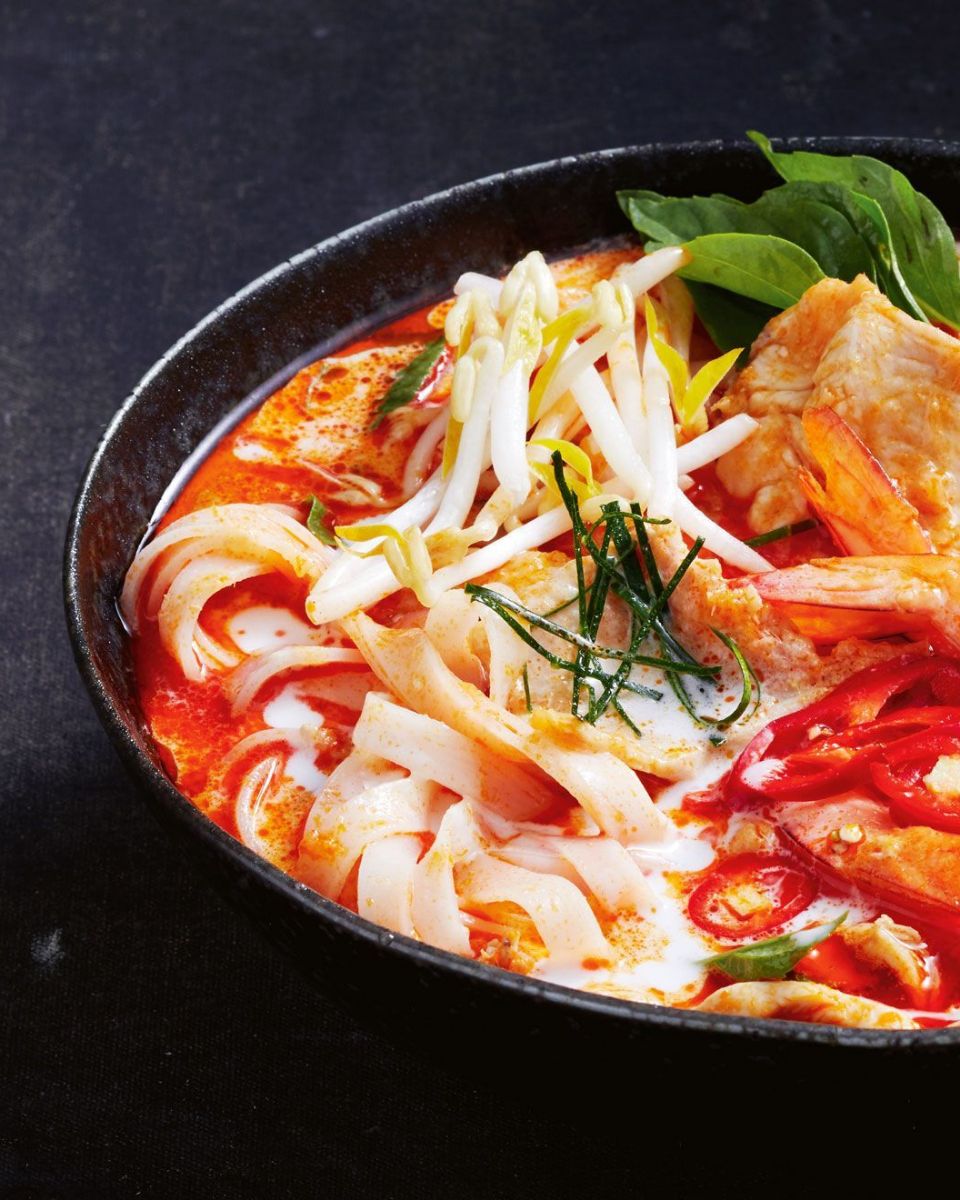
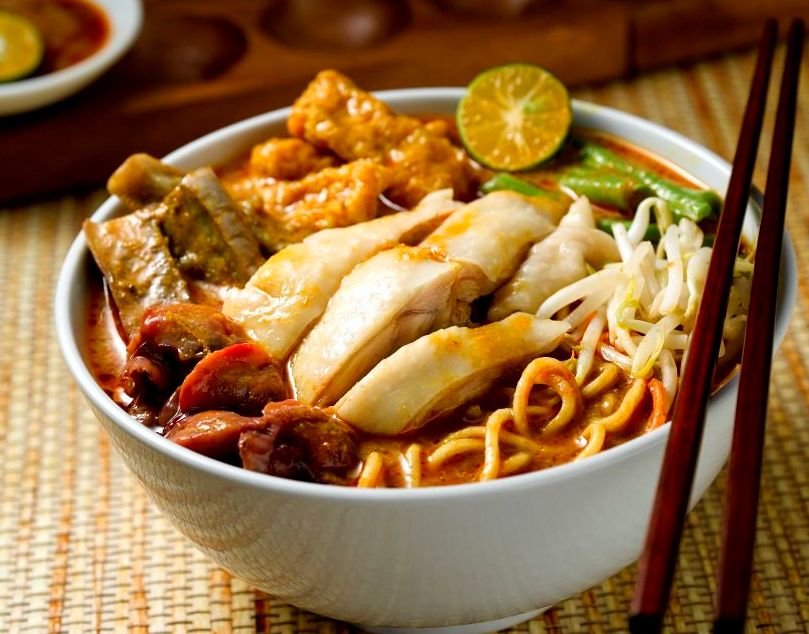
Common toppings include fried tofu puffs, fish cakes, blanched cockles, chicken, shrimp, minced laksa leaves, bean sprouts, and other vegetables.
The noodles, known as rice noodles or vermicelli, add another dimension to the soup, generally made with chicken, prawn, or fish, and served spicy. The broth is where all the culinary magic lies, and can be tricky to cook up, requiring hours of patient stirring and simmering.
In Singapore, they divide Laksa into Curry, Asam, and Sarawak Laksa.
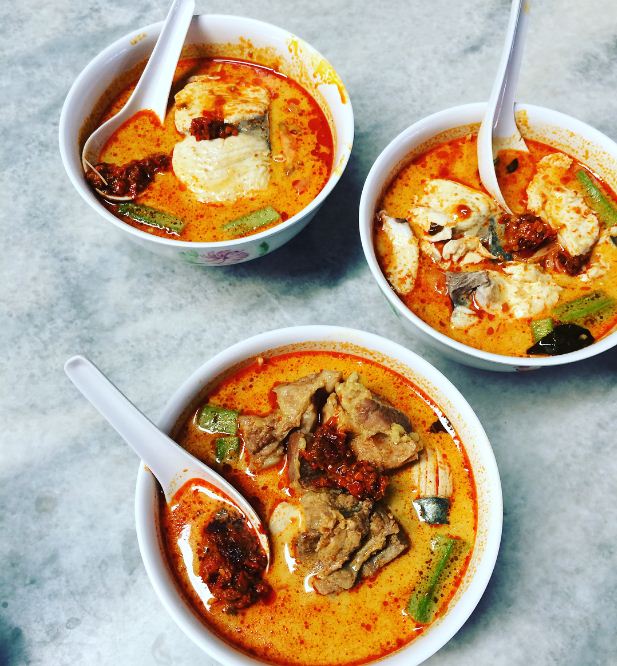
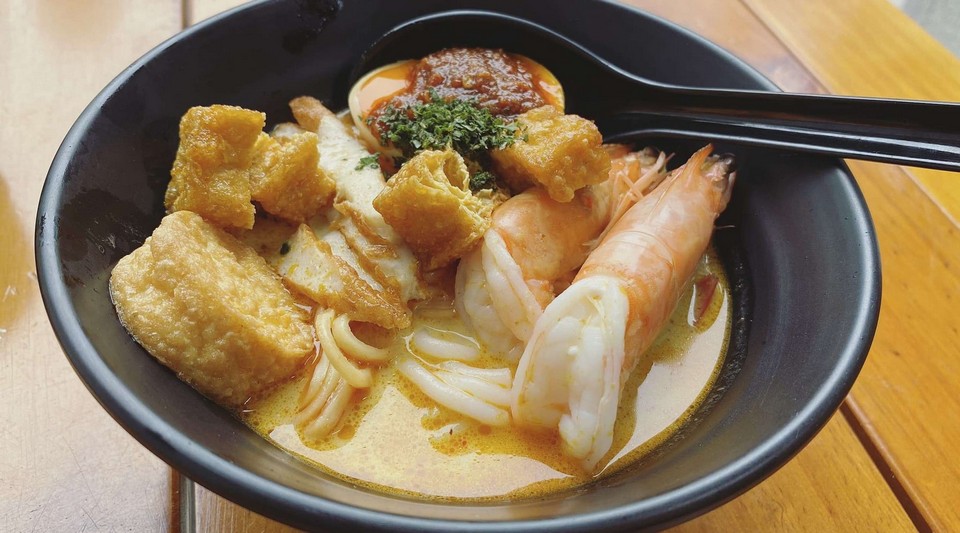
Curry Laksa: Curry Laksa is vermicelli in coconut milk and curry paste gravy. The creamy coconut-based curry broth is rich and concentrated, complex in flavor. Toppings such as tofu puff, prawns, bean sprouts, and cockles make this quite irresistible.

Asam Laksa: An authentic bowl of Asam laksa, served with vermicelli, should come garnished with fresh condiments such as onions, cucumber, torch ginger flower, red chilies, pineapple, lettuce, common mint. Asam laksa is normally served with either thick vermicelli.
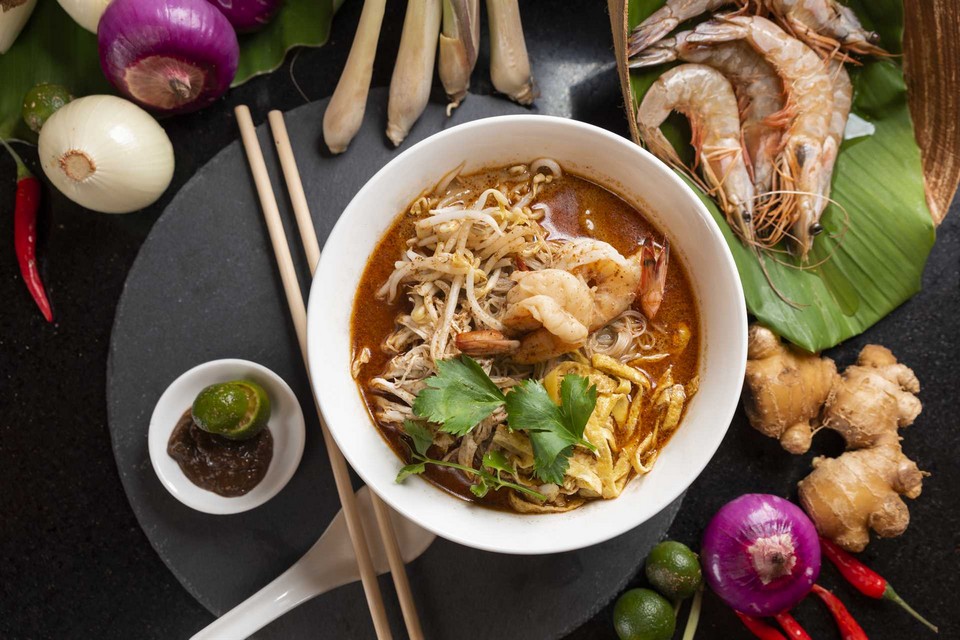
Sarawak Laksa: A typical bowl of Sarawak laksa contains thick rice vermicelli, beansprouts, prawns, chicken breast, egg, Calamansi, coriander, chili paste, and the highlight is the broth. The taste of Sarawak laksa broth has a fine balance of aromatic herbs and spices with a subtle hint of sourish and spicy notes.
Stingray
Stingray is called Ikan Bakar which represents the ideal fusion of spicy, salty, and succulent tastes, and is tucked away inside the diverse culinary tapestry of Singapore. This mouthwatering seafood dish, which drew inspiration from numerous cultural influences in Singapore, is a monument to the city-state’s rich culinary past.
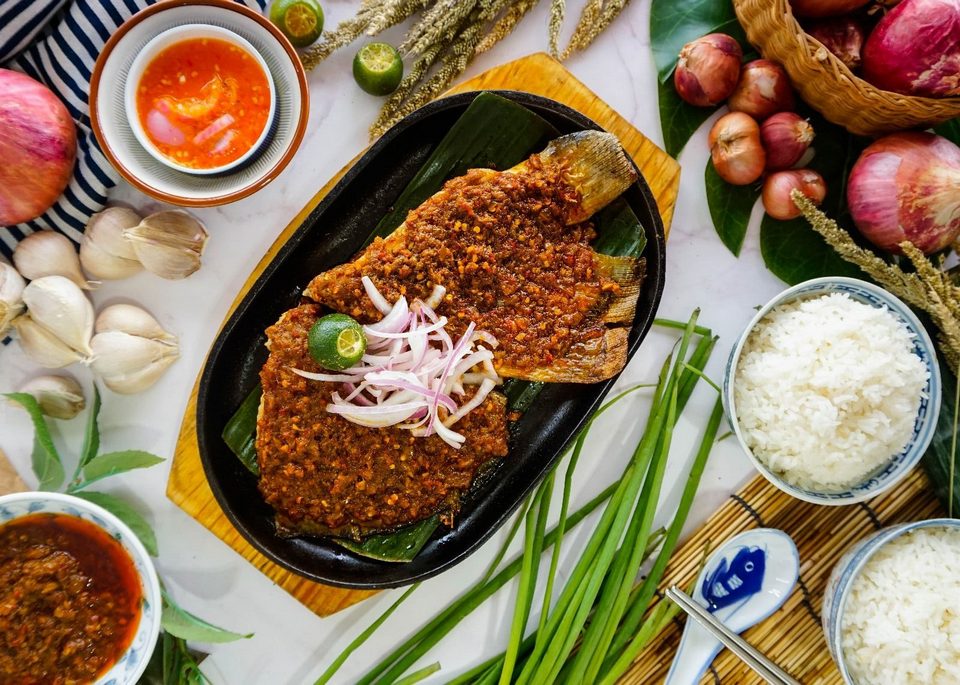
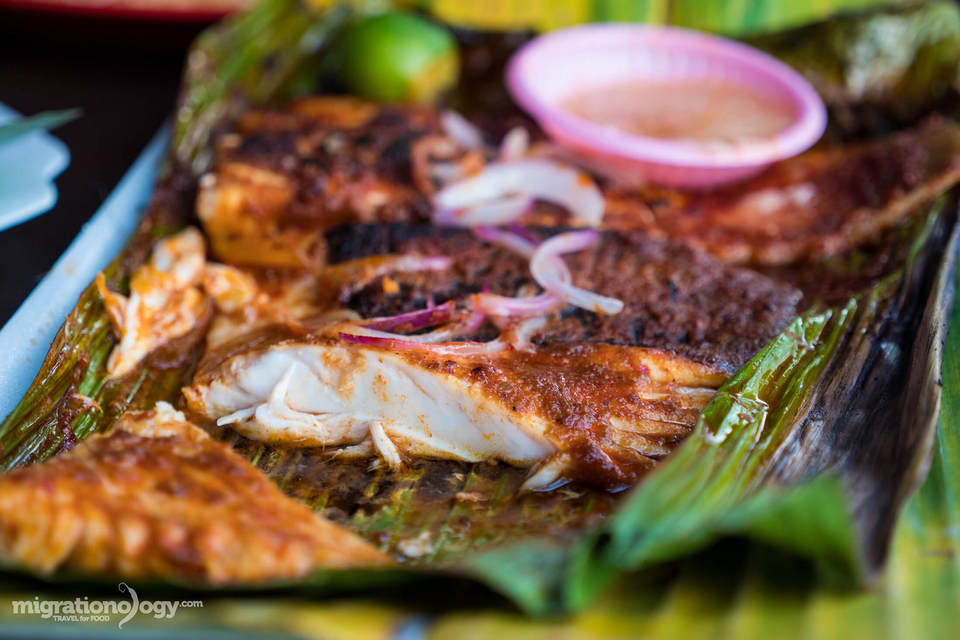

The stingray is wrapped in a banana leaf and grilled on a charcoal fire until cooked. Next, the fish is removed from the wrapping before topped with signature sauces (made in onions, hot peppers, and walnuts) and lemon or lime for an optional dash of freshness. The result is a dish that packs a punch with its wonderful layers of texture, flavors, and fragrances.
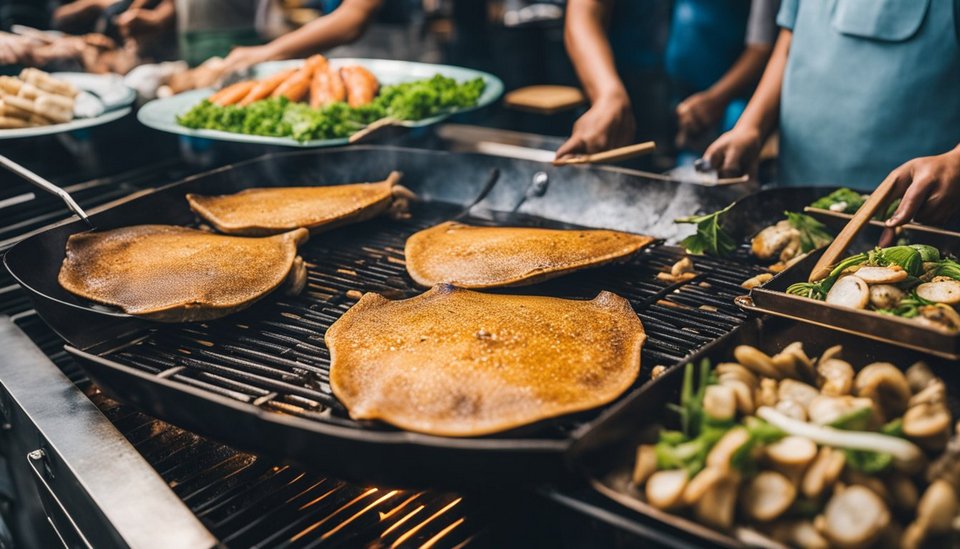
Stingray has established itself as a treasured Singaporean delicacy, rising from its humble origins as a favored street snack to its current stature as a must-try meal for residents and visitors. The Stingray is a hidden gem in the center of Singapore’s culinary scene, including its history, ingredients, and delectable experience.
Ginger Tea
Ginger tea has a rich history in Singapore for centuries. It was first introduced to the region by Chinese traders, and it quickly became a popular beverage among locals.
There are many exciting varieties of ginger tea available in Singapore. But anyway, it’s easy to select the perfect one for your taste preferences and health needs.


Ginger tea is packed with health benefits and is a popular beverage among locals and people worldwide. Drinking ginger tea can help to soothe an upset stomach, relieve nausea, and improve digestion. The active compounds in ginger are thought to stimulate the digestive system and reduce inflammation in the gut. Additionally, ginger has natural anti-inflammatory properties, which can help reduce inflammation and support healthy detoxification. This can be especially beneficial for those with skin conditions such as acne or eczema.
Haron Satay
The lack of fan exhaust causes the white fumes from the barbeque pits to build up within the area. You can be assured that the satay from these stalls has grilled and smoky flavors as most use charcoal instead of an electric grill.
Haron satay is usually served with side dishes such as peanut sauce, ketupat, onions, and cucumbers. The dish is often eaten as a snack or as a main course. It is a staple food for many Singaporeans.
The commonly used meats in the Haron satay are beef, mutton, lamb, pork, and chicken, which are served with a side of satay sauce with pineapple puree. This popular side dish makes an excellent starter or party platter. It has a strong turmeric scent and flavor, as this spice is the key marinade ingredient.
Many stalls peddle Haron-styled-skewer food like Haron satay along with the street to highlight the unique street cuisine in Singapore.
Yellow Noodles
Yellow noodles, a type of Asian Noodles, are well-known in Southeast Asia (Indonesia, Malaysia, Singapore, Thailand, Japan, etc.). The food is made with thin rice noodles called vermicelli noodles.
The reason why it is called Yellow Noodles is due to its appearance. Lye water is added as an ingredient to give a bright standard look to the yellow noodles and springy texture. The typical ingredients of Yellow Noodles consist of wheat flour, water, salt, and Alkaline salt.
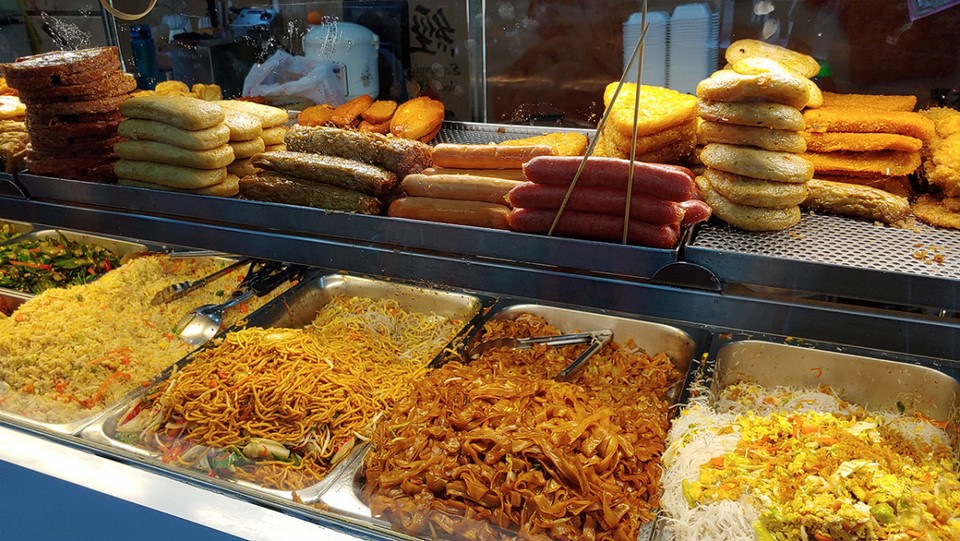
This Singapore Noodles recipe is bursting with authentic flavor and easily adaptable to whatever veggies or protein you have. It can be one of your favorites due to the chewy noodles, crunchy veggies, plump shrimp, curry flavor, and sensational sauce. Many eaters prefer outdoor stalls with spacious and airy locations where they can chat and admire the night scene.
Kaya Toast
Kaya Toast is the quintessential Singaporean breakfast that has been around for generations. Locals have found the food at hawker centers, coffee shops, and food courts.
Kaya Toast is served alongside a cup of Kopi and two soft-boiled eggs. There is good reason for the sustained popularity of such a simple sandwich: the sweet, pandan flavors of kaya (coconut jam), a salty part of butter, and mouthfeel of white bread make quite an irresistible combination.
Traditional Kaya toast is grilled on charcoal and served on thin, well-toasted slices of bread for a very crunchy, coffee dunk-able bite. However, there are many new renditions of Kaya Toast, usually swapping out the crispy toast for different breads: steamed, thick toast, French toast, and crackers.
It is the perfect snack that goes very well with a cup of local Kopi (coffee) or Teh (tea)—charcoal-grilled or toasted slices of bread enveloping slivers of cold butter and a generous spread of kaya (a traditional jam made from coconut and eggs). Some eat this toasted sandwich for breakfast, others prefer it for tea.
Frog Porridge
Frog porridge is a delicacy in Singaporean Chinese cuisine, and it has quickly become one of the most iconic dishes in Singapore. Rich in protein, omega-3—3 fatty acids, vitamins, and minerals, and low in fat, frog meat makes for a healthy and delicious dish.
This comfort dish is served piping hot, typically in plain porridge next to a clay pot full of frog legs, braised in a dark ginger, soy-based sauce. Some places cook the frog legs together with the porridge. To prepare this food, it is necessary to have a lot of ingredients including frog meat, rice wine or apricot wine, ginger, onion, Kung pao sauce (a special Singaporean sauce), pandan leaves, rice for porridge, and necessary spices.
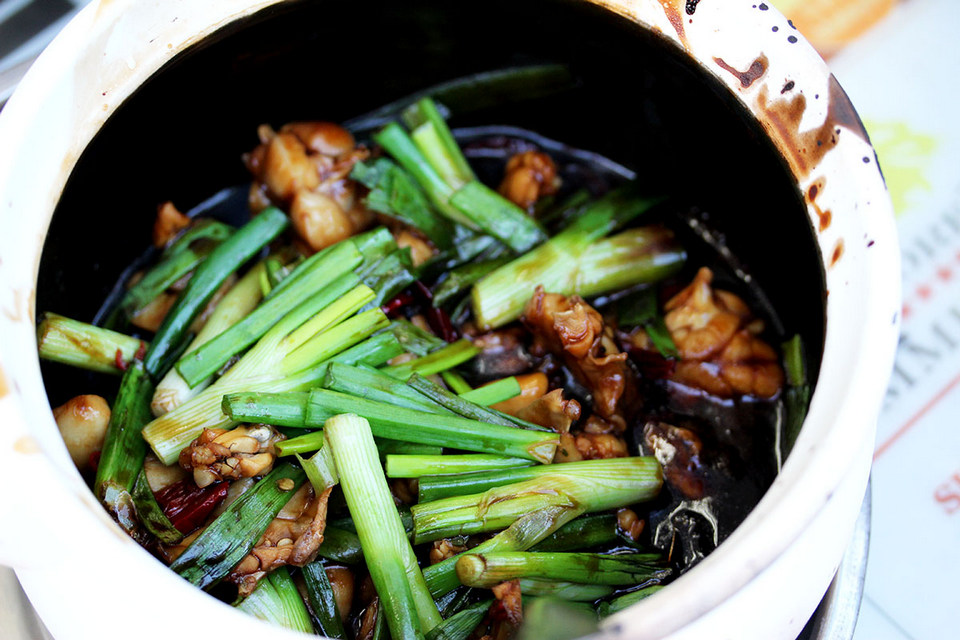
This porridge dish is quite simple to cook. You need to choose fresh frog meat so that the meat is not fishy, firm, and delicious when processed. The frogs are cleaned, dried, and marinated with spices for 20 minutes to absorb evenly.
After frying the onion, garlic, and chili powder, stir-fry the frog, add filtered water, and bring to a boil. Season to taste, then put in the clay pot and boil until the water thickens, the frog meat is cooked, and the spices are absorbed. The accompanying white porridge is cooked from new, whole-grain rice. After the rice is washed, put it in the pot and cook until soft, add pandan leaves and cook until cooked, then remove the pandan leaves and you’re done.
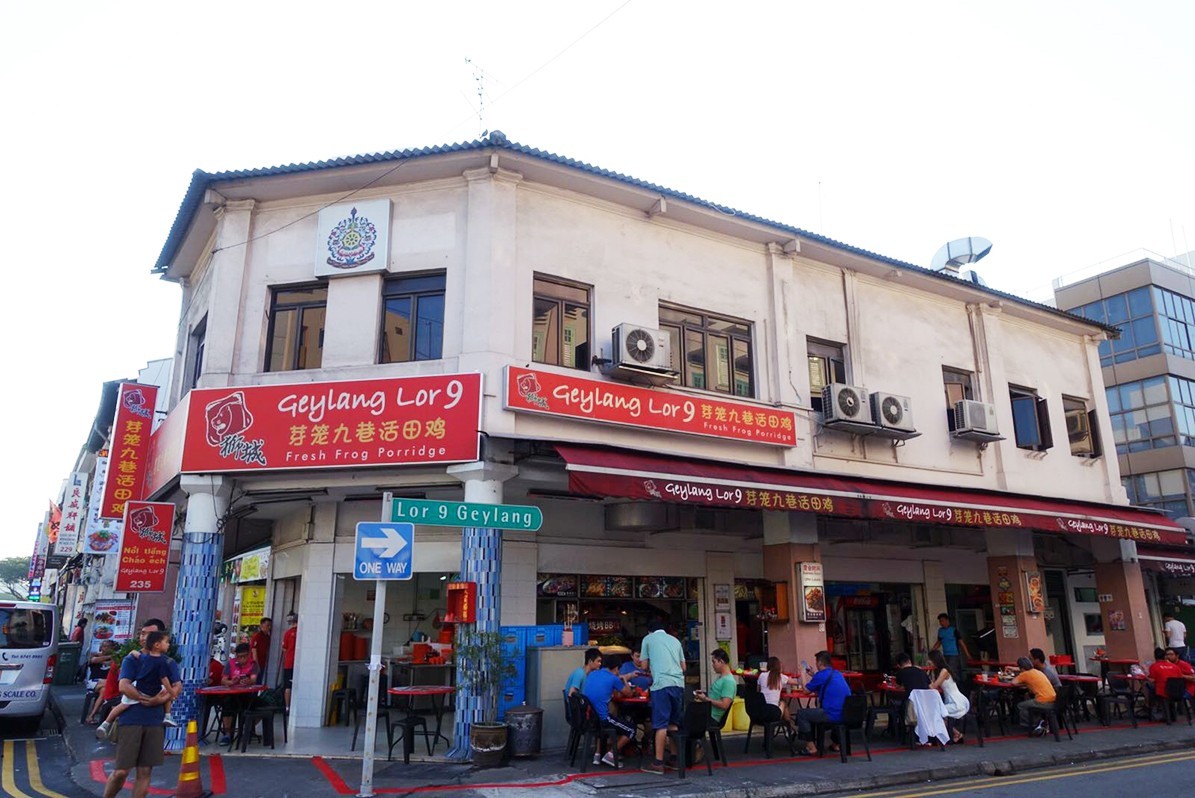
Frog porridge restaurants and hawkers are open from evening to over midnight. A hot pot of porridge for dinner or supper will warm up one’s enthusiasm at the end of the day.
A short journey is enough as a wondrous time in Singapore, where you can get to try a taste of the old and new and sample a small taster of its culinary offerings. Even, you can come back to enjoy the same or new dishes here if you are still passionate about Singaporean cuisine!
Some best day tours, trips, activities and transfer services, tickets in, from and to Singapore you can refer to
- Singapore Changi Airport (SIN) Private Transfer
- Shared Changi Airport Transfers (SIN) for Singapore Hotels
- Singapore Big Bus Hop-On Hop-Off Tour (Open-Top)
- Sentosa FUN Pass
- Singapore City Pass (2/3 Days)
- [Klook Exclusive] Universal Studios Singapore™ 1 Day Ticket
- Gardens by the Bay Ticket Singapore
- S.E.A. Aquarium™ One-Day Ticket
- ArtScience Museum at Marina Bay Sands Ticket
- Singapore Cable Car Sky Pass
- Jewel Changi Airport Attraction Tickets in Singapore
- Singapore Flyer Tickets
- Skyline Luge Singapore: Skyline Luge & Skyride
- Marina Bay Sands Skypark Observation Deck or Sampan Ride
- Adventure Cove Waterpark™ One-Day Ticket
- Science Centre Singapore, Butterflies Up-Close, Omni Theatre
- Singapore River Cruise
- Madame Tussauds Singapore Ticket
- Wings of Time Show Ticket in Singapore
- LiHO TEA in Singapore
- Singapore Travel Card (NETS FlashPay)
- Universal Studios Singapore Tickets
- Klook Pass Singapore
- 4G Prepaid Sim Card (Changi Airport Pick Up) for Singapore
- 4G WiFi (SG Airport Pick Up) for Singapore
- 4G Portable WiFi for Singapore from Uroaming
- 4G WiFi (SG Pick Up) for Europe
Are you finding more top things to do in Singapore: Tours, activities, attractions and other things? Read more: Singapore travel blog — The fullest Singapore travel guide blog for a budget trip to Singapore for the first-timers.
































